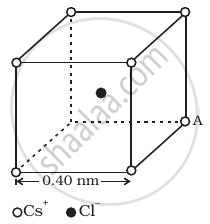Advertisements
Advertisements
Question
Consider a coin of Example 1.20. It is electrically neutral and contains equal amounts of positive and negative charge of magnitude 34.8 kC. Suppose that these equal charges were concentrated in two point charges seperated by (i) 1 cm `(∼ 1/2 xx "diagonal of the one paisa coin")`, (ii) 100 m (~ length of a long 6 building) and (iii) 106 m (radius of the earth). Find the force on each such point charge in each of the three cases. What do you conclude from these results?
Solution
- `F_1 = |q|^2/(4pi ε_0 r_1^2) = (8.99 xx 10^9 (Nm^2)/C^2) ((3.48 xx 10^4 C))/(10^-4 m^2)` = 1.1 × 1023 N
- `F_2/F_1 = r_1^2/r_2^2 = (10^-2 m)^2/(10^2 m)^2` = 10–8 ⇒ F2 = F1 × 10–8 = 1.1 × 1015 N
- `F_3/F_1 = r_1^2/r_3^2 = (10^-2 m)^2/(10^6 m)^2` = 10–16
F3 = 10–16 F1 = 1.1 × 107 N.
APPEARS IN
RELATED QUESTIONS
Explain the meaning of the statement ‘electric charge of a body is quantised’.
A metallic sphere A isolated from ground is charged to +50 μC. This sphere is brought in contact with other isolated metallics sphere B of half the radius of sphere A. The charge on the two-sphere will be now in the ratio
Choose the correct option.
Two-point charges of A = +5.0 μC and B = -5.0 μC are separated by 5.0 cm. A point charge C = 1.0 μC is placed at 3.0 cm away from the centre on the perpendicular bisector of the line joining the two point charges. The charge at C will experience a force directed towards
Answer the following question.
State the law of conservation of charge.
Eight dipoles of charge of magnitude ± e are placed inside a cube. The total electric flux coming out of the cube will be:-
The dimensions of an atom are of the order of an Angstrom. Thus there must be large electric fields between the protons and electrons. Why, then is the electrostatic field inside a conductor zero?
Figure represents a crystal unit of cesium chloride, CsCl. The cesium atoms, represented by open circles are situated at the corners of a cube of side 0.40 nm, whereas a Cl atom is situated at the centre of the cube.

The Cs atoms are deficient in one electron while the Cl atom carries an excess electron.
- What is the net electric field on the Cl atom due to eight Cs atoms?
- Suppose that the Cs atom at the corner A is missing. What is the net force now on the Cl atom due to seven remaining Cs atoms?
A steady current of 8 mA flows through a wire. The number of electrons passing through a cross-section of the wire in 10 s is ______.
